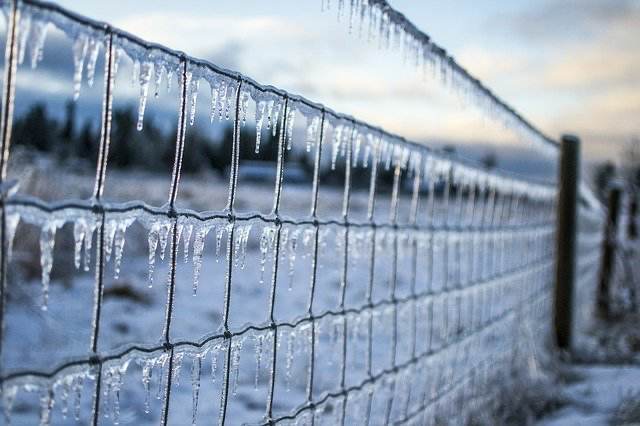
Insurance and reinsurance market losses from winter storm Uri and related severe winter weather in the United States may become another factor in the availability of alternative capital, given the loss will highlight the risk of catastrophes being unmodelled and perhaps heighten climate change concerns, S&P has warned.While there’s currently no certainty over just how impactful to alternative reinsurance capital the winter storm episode may be, S&P Global Ratings muses that it could be another event that has an effect on investor appetite for some insurance-linked securities (ILS).It’s a valid point that S&P raises, as ILS investor appetites have been impacted by the unmodelled nature of some losses before, particularly where losses fell far outside of the risk model guidance.In just the last few years you can add Florida’s hurricane loss creep, some of Japan’s typhoons, California’s wildfire impacts and most recently the COVID-19 pandemic, to the list of catastrophe loss events that impacted some alternative reinsurance and ILS capacity sources, where exposure had perhaps not been fully anticipated, or appreciated, by the investor-base.
S&P explains on the winter storm, “The recent Winter Storm Uri that hit many parts of the U.S.with Texas taking the brunt of the losses highlights the risk from unmodelled events and climate change in general, which will in turn play into alternative capital availability and reinsurance pricing.” The rating agency went on to state, “The majority of these losses will most likely be absorbed by the large national insurers’ retentions, with a portion of these losses assumed by reinsurers, which will further serve to reinforce some of the concerns of alternative capital backers regarding climate change, risk modelling, and mitigation capabilities of capital managers.” How impactful losses from the winter storm and severe winter weather could be on ILS investor appetites, will entirely depend on how much of the loss flows to relevant insurance-linked securities (ILS) strategies or funds.It’s far too early to make any assumptions there, aside from to say that some leakage of winter storm claims to alternative capital is definitely on the cards.
With risk modelling firms , it will raise more questions.But, we’ve already spoken to some ILS managers, who suggest that a winter storm loss of this magnitude was always something they had anticipated as a potential tail risk event, so it was considered in their portfolio construction strategy.We’ve also spoken to some end-investors who say that realistically, while an outsized loss from a winter storm is unusual, it was not completely unexpected.
As we explained last week, .These markdowns were to be expected, as investors and ILS fund managers anticipated a significant further erosion of deductibles for some aggregate reinsurance positions.As we explained at the beginning of this week, , showing that the market’s view on the loss quantum changed over the last week.
ILS and cat bond fund managers have been shying away from these aggregate positions, or at least down-weighting their concentration within cat bond portfolios, in recent years.ILS funds have now become acutely aware of the tail risk posed by outsized catastrophe events qualifying under aggregates, or events whose losses stretch well-outside of the outputs of the main catastrophe risk models.At the same time ILS fund managers are extremely focused on putting available tools to good use in trying to understand where climate could be a factor in driving catastrophe losses beyond where the models see them.
As a result, many cat bond funds have reduced their exposure to riskier aggregate layers, as too have many ILS funds focused on private transactions.But, when a loss of this magnitude, falling this far outside of the modelled range occurs, it can still affect some positions.Especially those sponsored by cedents whose business has a significant market share in Texas, the state most impacted by the winter storm.
The unprecedented nature of the winter storm loss, in terms of temperatures recorded, the reach of the severe winter weather, the duration of the event, the knock-on effect on utilities and infrastructure and how that will elevate losses, all of which has driven considerable uncertainty over elements such as business interruption and demand surge, means that ILS investors are likely to take a realistic view in understanding that this was a particularly unusual event and so very far out in the tail.No matter how unprecedented though, it is the latest example of losses falling well outside of where the risk models typically forecast them, and it will, as S&P suggests, raise more questions about climate change and its effect on insurance, reinsurance and ILS market losses.This will further heighten the focus on accuracy of risk models, the frequency of risk model updates, as well as how they incorporate climate change factors into their output.
It’s worth noting that all the same questions will be asked of traditional reinsurance firms, as they will of the ILS market.As an aside, it will be interesting to see how this winter storm loss event impacts some of the new re/insurer start-ups.An unexpected catastrophe like this, coming in the first quarter of a businesses first year of operation, could pose a particular challenge if there are any players with an outsized exposure to it.
– .– .– .
– .– .– .
– .– .– .
– .– .– .———————————————————————.
All of our Artemis Live insurance-linked securities (ILS), catastrophe bonds and reinsurance can be accessed online.Our can be subscribed to using the typical podcast services providers, including Apple, Google, Spotify and more.
Publisher: Artemis








